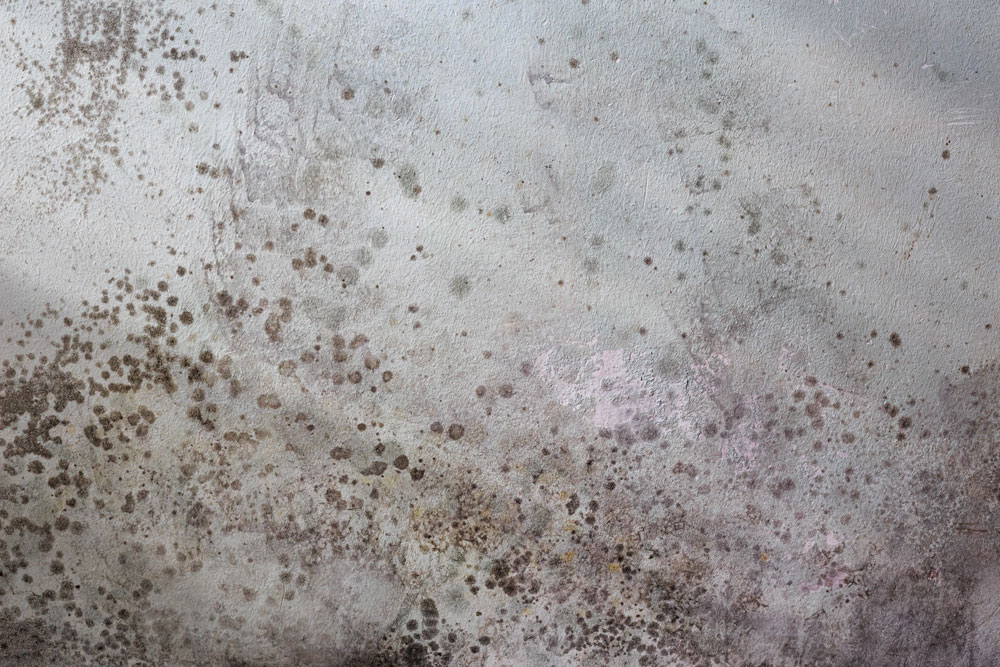How To Get Rid Of Mould On Walls In The Bedroom
 CONTENTS
CONTENTS
- What is mould?
- What causes mould to grow on bedroom walls?
- The signs of mould growth on walls
- How to remove mould from bedroom walls
- How to prevent mould in the bedroom
- Get in touch
Keeping your bedroom clean and mould-free is critical to ensuring a peaceful night's sleep and protecting your health. In the event that you spot any mould on the walls of your bedroom, bring in professionals for remediation immediately.
Here at ICE Cleaning, we offer our mould removal services nationwide. We operate 24/7, 365 days a year, including bank holidays. If it's an emergency, we can be on site within several hours.
Keep reading to find out more about how to remove mould on walls in the bedroom.
What is mould?
Mould is a type of fungus that thrives in damp, humid environments. It reproduces by releasing spores into the air which settle and grow on surfaces where there is moisture, organic material, and oxygen present. You can find out more about what causes mould in the home in this blog.
The dangers of mould in the bedroom
Exposure to mould poses a wide range of health risks. When inhaled, ingested, or touched, it can put you at risk of allergic reactions, asthma attacks, lung infections, and sick building syndrome. Certain types of mould also produce mycotoxins - toxic substances that are particularly harmful when ingested or inhaled.
It is especially harmful to sleep in a mouldy bedroom as you will be exposed to it for very long periods of time. It has even been linked to increased sleep problems like insomnia and snoring.
What causes mould to grow on bedroom walls?
Mould thrives in poorly ventilated spaces that contain excess moisture. The main culprits are condensation on cold surfaces like windows and walls, leaky pipes and windows, and high humidity.
Bedrooms often provide mould with its ideal conditions for growth due to the amount of water vapour we release into the air as we sleep which makes the air humid. They also tend to contain lots of organic material for the mould to grow on and feed off like wooden furniture, bed linen, and even clothes.
Rising and penetrating damp can make walls damp enough for mould to start growing there, as well.
The signs of mould growth on walls
The main sign is discolouration. Mould usually shows up as black, green or brown patches or spots, but it can be a much wider range of more vibrant colours.
Another indicator is a musty, damp odour in your bedroom. Mould releases microbial volatile organic compounds which can give off its tell-tale smell.
Damp patches on walls also signify a potential area where mould could grow. You will want to look out for peeling wallpaper or bubbling paint, too - this a clear indication of too much moisture behind them.
If your allergies suddenly seem worse when spending time indoors, you may be having a reaction to the mould spores in your property. Symptoms to be wary of include:
- Sneezing fits without obvious triggers
- Irritated eyes despite no visible irritants
- A runny nose when inside
How to remove mould from bedroom walls
Although it may be tempting, you should never try to remove mould yourself. Firstly, most mould removal methods are ineffective and can damage or discolour paint and wallpaper.
It is also dangerous. Bleach, for example, can irritate the skin and eyes, and is dangerous to inhale. Scrubbing mould can cause it to release spores into the air which may then spread to other parts of the property, as well.
For peace of mind that all the mould has been removed from your home, bring in professional mould cleaners. Experts have access to specialised equipment like HEPA vacuums and commercial-grade antimicrobials which are designed specifically for treating contaminated areas without compromising safety or surface integrity.
They will be able to safely get rid of all the mould and ensure it does not spread around the property. Mould specialists can even diagnose what has caused the mould in your home and advise on how to prevent it returning in the future.
How to prevent mould in the bedroom
Good air flow is critical in preventing mould. Make sure you air out your bedroom daily by opening windows. If natural ventilation is not enough, consider investing in a dehumidifier to control humidity levels further. Aim to keep your bedroom's humidity level below 40% all day.
Dust and dirt provide food for mould spores so keeping surfaces clean with regular dusting and vacuuming will ensure they don't thrive on surfaces. Pay special attention to dark corners and behind furniture where mould may grow unnoticed.
Avoid leaving wet clothes or towels in your bedroom as they increase localised dampness. Always try to dry laundry outside or in well-ventilated indoor areas away from walls and furniture.
You can find out more about the different ways to prevent mould in your bedroom in this blog.
Get in touch
Our nine-stage mould removal process can eliminate all the mould in your home, including mould in the air.
You can book our technicians for mould remediation by calling our friendly team on 0208 066 0360 or sending an email to enquiries@icecleaning.co.uk.

Speak with me today,
I’m here to help
By asking you a few questions either via phone or email I can immediately provide a realistic estimation of the cost.
You’re in good company. We’ve cleaned for the following commercial clients… View all

Why choose us?
- Cater to a wide variety of cleaning situations
- Nationwide coverage, available 24/7
- Cater to commercial and domestic clients
- Free survey provided prior to quotation
- Emergency response team
- Offer a bespoke service designed to suit all your needs
- All technicians hold professional health and safety qualifications, including BICSc, IOSH, Dewpoint Professional & Safe Contractor
We’re fully accredited
We place best practise, professional expertise and health and safety at the core of our business. We’re fully compliant with all legal obligations. You can view a list of our accreditations below, or visit our Health & Safety page for more information.











-RGB-small.1707319151.jpg)




















